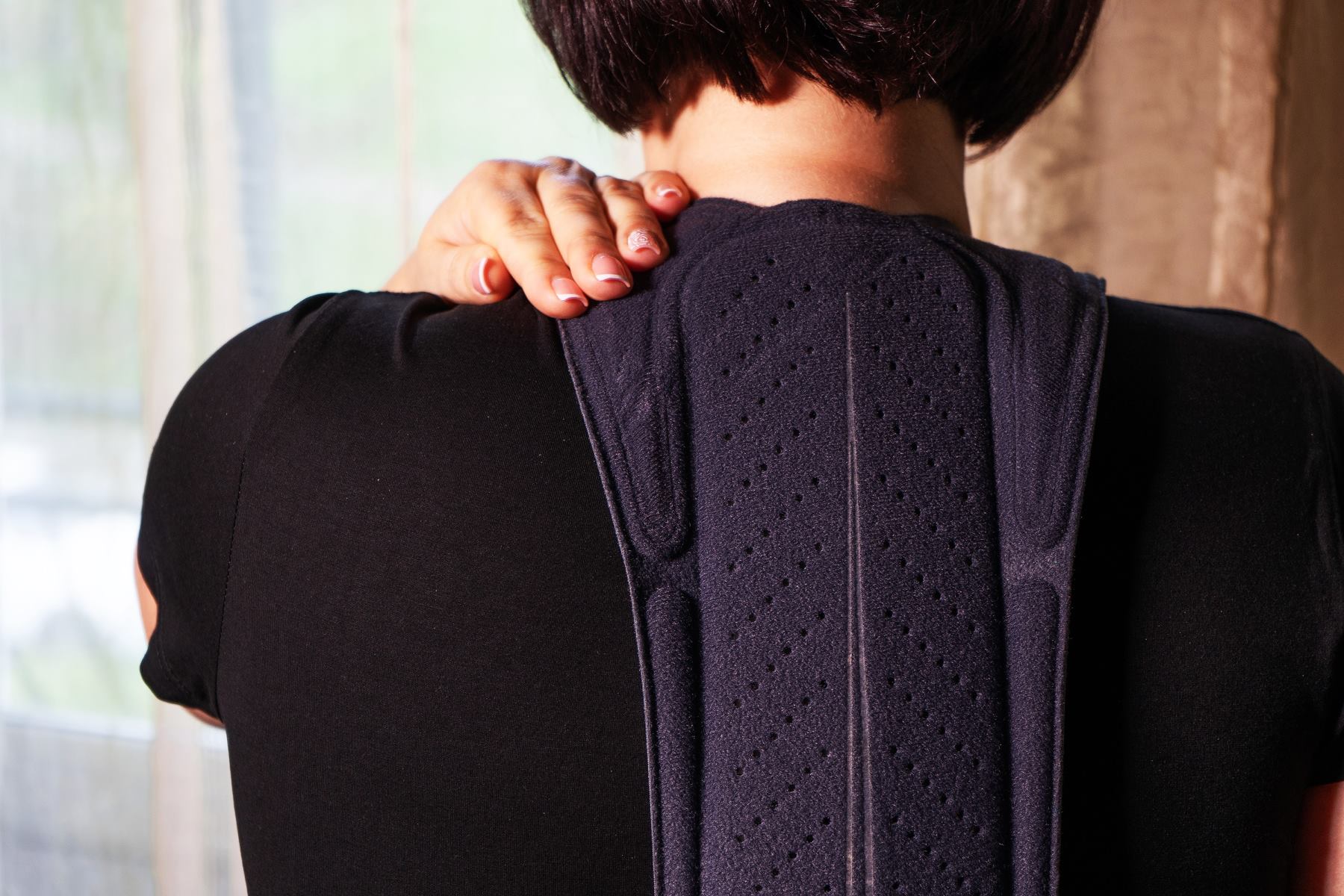Home>Health & Nutrition>Getting Back Into Running While Breastfeeding: Tips And Advice


Health & Nutrition
Getting Back Into Running While Breastfeeding: Tips And Advice
Published: February 23, 2024
Discover expert tips and advice for getting back into running while breastfeeding. Learn about health and nutrition strategies to support your fitness journey.
(Many of the links in this article redirect to a specific reviewed product. Your purchase of these products through affiliate links helps to generate commission for Therunningadvisor.com, at no extra cost. Learn more)
Table of Contents
- The Benefits of Running while Breastfeeding
- Considerations for Postpartum Exercise
- Finding the Right Supportive Sports Bra
- Tips for Managing Milk Supply and Hydration
- Scheduling Runs around Feedings and Sleep
- Listening to Your Body and Adjusting Expectations
- Incorporating Strength Training and Cross-Training
- Seeking Professional Guidance and Support
The Benefits of Running while Breastfeeding
Running while breastfeeding offers numerous advantages for new mothers. Engaging in this form of exercise can contribute to physical, mental, and emotional well-being during the postpartum period. Here are some of the key benefits:
-
Physical Activity: Running provides a convenient and effective way to incorporate physical activity into a new mother's routine. It can help in regaining strength and stamina, which may have been diminished during pregnancy and childbirth.
-
Stress Relief: The act of running can serve as a valuable outlet for stress relief. The endorphins released during exercise can help elevate mood and reduce feelings of anxiety or postpartum blues.
-
Weight Management: For many women, the desire to return to their pre-pregnancy weight is a significant consideration. Running can aid in burning calories and supporting weight management goals.
-
Improved Sleep: Regular exercise, such as running, has been linked to improved sleep quality. This is particularly beneficial for new mothers who may be experiencing disrupted sleep patterns due to caring for a newborn.
-
Mental Well-being: The sense of accomplishment and empowerment that comes from engaging in physical activity can positively impact a mother's mental well-being. Running can provide a much-needed mental break and an opportunity for self-care.
-
Bonding with Baby: Some mothers choose to incorporate running with their baby by using a jogging stroller. This can be a wonderful way to bond with the baby while enjoying the benefits of outdoor exercise.
-
Community Connection: Joining running groups or clubs can provide new mothers with a sense of community and support. This social aspect can be invaluable during the postpartum period.
Incorporating running into a postpartum routine can be a positive and empowering choice for many breastfeeding mothers. It is important to approach this form of exercise with consideration for individual circumstances and to seek guidance from healthcare professionals as needed.
Considerations for Postpartum Exercise
The postpartum period is a time of significant physical and emotional adjustment for new mothers. When considering the resumption of exercise, particularly high-impact activities such as running, there are several important factors to take into account.
Physical Recovery
The body undergoes remarkable changes during pregnancy and childbirth. It's crucial to allow for adequate recovery time before engaging in strenuous exercise. Postpartum women should be mindful of any lingering discomfort, pelvic floor issues, or abdominal separation (diastasis recti) that may impact their ability to run safely. Consulting with a healthcare provider or a postpartum fitness specialist can provide valuable insight into the readiness for resuming running.
Hormonal Balance
Hormonal fluctuations, particularly the hormone relaxin, which remains elevated in the postpartum period, can affect joint stability and increase the risk of injury. This underscores the importance of easing back into running gradually and being attentive to any signs of joint discomfort or instability.
Breast Health
For breastfeeding mothers, breast health is a crucial consideration when engaging in physical activity. Wearing a supportive sports bra that minimizes breast movement can help prevent discomfort and reduce the risk of tissue damage. Additionally, nursing or pumping before exercise can alleviate breast fullness and minimize the potential for discomfort during a run.
Energy Levels and Nutrition
The demands of caring for a newborn can be physically and emotionally taxing. It's essential for postpartum women to prioritize adequate nutrition and hydration to support their energy levels and overall well-being. Running on an empty stomach or while significantly dehydrated can exacerbate fatigue and diminish the enjoyment of the activity.
Mental and Emotional Well-being
The postpartum period can be emotionally challenging, and the decision to resume exercise should be approached with sensitivity to mental well-being. Some women may find solace and empowerment in running, while others may need to prioritize gentler forms of movement initially. It's important to honor individual emotional needs and seek support if feelings of anxiety or postpartum depression arise.
Listening to the Body
Above all, listening to the body is paramount when reintroducing running postpartum. Paying attention to any discomfort, fatigue, or signs of overexertion is crucial. Being flexible with expectations and embracing a gradual approach to building endurance can help prevent injury and support a positive postpartum exercise experience.
By considering these factors and approaching postpartum exercise with mindfulness and self-compassion, new mothers can navigate the return to running in a way that supports their physical and emotional well-being. Seeking guidance from healthcare professionals and postpartum fitness experts can provide valuable support and personalized recommendations for a safe and enjoyable postpartum exercise journey.
Finding the Right Supportive Sports Bra
Selecting the right supportive sports bra is a crucial consideration for breastfeeding mothers who are eager to resume running postpartum. The physical changes that occur during pregnancy and breastfeeding can significantly impact breast size, shape, and sensitivity, making it essential to prioritize comfort and support when choosing a sports bra for running.
Importance of Support
The breasts undergo changes in size and density during pregnancy and lactation, and without proper support, the ligaments that support the breasts can stretch and lead to discomfort or pain. A supportive sports bra can minimize breast movement during physical activity, reducing the risk of tissue damage and discomfort. For breastfeeding mothers, a well-fitted sports bra can also help alleviate engorgement and provide necessary support during runs.
Features to Look For
When shopping for a supportive sports bra, there are several key features to consider:
Adjustable Straps and Band
A sports bra with adjustable straps and a secure band allows for a personalized fit, accommodating fluctuations in breast size and providing the necessary support during physical activity.
Moisture-Wicking Fabric
Opting for a sports bra made from moisture-wicking fabric can help manage sweat and moisture, reducing the likelihood of chafing and discomfort during runs.
Encapsulation or Compression
Some sports bras offer encapsulation, which provides individual support for each breast, while others utilize compression to minimize movement. The choice between these styles depends on personal preference and comfort.
Nursing-Friendly Design
For breastfeeding mothers, a nursing-friendly sports bra with easy access for nursing or pumping can be a practical choice, allowing for convenient feeding before or after a run.
Proper Fit
Achieving the right fit is essential for maximizing comfort and support. When trying on sports bras, it's important to ensure that the band fits snugly around the ribcage without feeling constricting, and the cups provide ample coverage and support without causing discomfort or compression.
Professional Fitting
Many specialty lingerie stores and athletic retailers offer professional bra fitting services, which can be particularly beneficial for postpartum women. A professional fitting can provide personalized recommendations and ensure that the chosen sports bra accommodates the unique needs of a breastfeeding mother.
Final Considerations
Ultimately, finding the right supportive sports bra is a personalized process that hinges on individual comfort, activity level, and breastfeeding needs. By prioritizing support, comfort, and functionality, breastfeeding mothers can select a sports bra that facilitates a smooth and enjoyable return to running, supporting their physical well-being and overall postpartum experience.
Tips for Managing Milk Supply and Hydration
Maintaining an adequate milk supply is a top priority for breastfeeding mothers who are also eager to resume running. Balancing the hydration needs of both the body and the baby is essential for a successful postpartum running experience. Here are some valuable tips for managing milk supply and hydration while incorporating running into a breastfeeding routine:
Hydration for Mother and Baby
Proper hydration is crucial for both the lactating mother and her baby. Breastfeeding women should prioritize regular water intake to support milk production and overall hydration. When planning a run, it's beneficial to drink water beforehand and have a water bottle accessible during and after the exercise session. Ensuring that the body is adequately hydrated can help maintain milk supply and prevent dehydration-related discomfort during physical activity.
Nursing or Pumping Before Running
Breastfeeding before a run can help manage milk supply and alleviate any discomfort associated with engorgement. By emptying the breasts before exercise, mothers can reduce the risk of leakage and maintain comfort during their run. Additionally, nursing or pumping immediately after a run can help signal the body to continue milk production, supporting ongoing milk supply.
Monitoring Baby's Feeding Patterns
Paying attention to the baby's feeding cues and patterns can provide valuable insight into milk supply and breastfeeding success. If the baby is content and gaining weight appropriately, it's an indication that the milk supply is meeting the baby's needs. By staying attuned to the baby's feeding behaviors, breastfeeding mothers can adjust their running schedule to align with the baby's feeding routine, ensuring that both the mother and the baby's needs are met.
Nutrient-Rich Diet
Incorporating a nutrient-rich diet that includes a variety of fruits, vegetables, lean proteins, and whole grains can support milk production and overall maternal health. Consuming foods with high water content, such as watermelon, cucumbers, and soups, can contribute to hydration while providing essential nutrients. Prioritizing a well-rounded and nourishing diet can help breastfeeding mothers maintain milk supply while engaging in physical activity.
Post-Run Rehydration
After completing a run, it's important for breastfeeding mothers to prioritize rehydration. Drinking water or a hydrating beverage can help replenish fluids lost during exercise and support post-run recovery. Rehydrating promptly after a run can aid in maintaining milk supply and preventing dehydration-related issues.
By implementing these tips, breastfeeding mothers can effectively manage milk supply and hydration while incorporating running into their postpartum routine. Prioritizing hydration, monitoring feeding patterns, and maintaining a nutrient-rich diet can support both the mother's running goals and the baby's nutritional needs, fostering a balanced and fulfilling postpartum experience.
Scheduling Runs around Feedings and Sleep
Scheduling runs around feedings and sleep is a crucial consideration for breastfeeding mothers who are eager to incorporate running into their postpartum routine. Balancing the demands of caring for a newborn with the desire to engage in physical activity requires thoughtful planning and flexibility. By aligning running sessions with optimal times for both the mother and the baby, breastfeeding mothers can effectively integrate this form of exercise into their daily schedule.
Timing Runs with Feedings
Coordinating runs with the baby's feeding schedule can help ensure that the mother can engage in uninterrupted physical activity while minimizing the potential for discomfort or engorgement. Planning a run shortly after a feeding session can allow the mother to experience greater comfort and freedom of movement, as the breasts are likely to be less full at this time. Additionally, the act of running can serve as a valuable opportunity for the mother to enjoy some personal time while the baby is content and well-fed.
Considering Sleep Cycles
Taking into account the baby's sleep patterns can also play a significant role in scheduling runs. Many breastfeeding mothers find that early morning or late evening runs align well with the baby's longer sleep stretches, allowing for uninterrupted exercise. By being attuned to the baby's sleep cues and establishing a predictable routine, mothers can carve out dedicated time for running without compromising the baby's needs for nourishment and comfort.
Flexibility and Adaptability
Flexibility is key when scheduling runs around feedings and sleep. Babies' feeding and sleep patterns can fluctuate, and it's important for mothers to remain adaptable and open to adjusting their running schedule as needed. Embracing a flexible approach can help alleviate potential stress or pressure associated with adhering to a rigid exercise routine, allowing for a more relaxed and enjoyable postpartum running experience.
Partner Support and Collaboration
In some cases, enlisting the support of a partner or a trusted caregiver can facilitate the scheduling of runs around feedings and sleep. Having a designated individual available to tend to the baby's needs while the mother goes for a run can provide peace of mind and enable the mother to focus on her exercise session without distraction. Collaborating with a partner to establish a running schedule that accommodates both the mother's and the baby's needs can foster a sense of teamwork and support within the family dynamic.
By strategically timing runs around feedings and sleep, breastfeeding mothers can effectively integrate running into their postpartum routine while prioritizing the well-being of both themselves and their baby. This thoughtful approach to scheduling allows for the enjoyment of physical activity without compromising the nurturing and attentive care that is essential during the breastfeeding stage.
Listening to Your Body and Adjusting Expectations
Listening to your body is a fundamental aspect of postpartum running, particularly for breastfeeding mothers. The physical changes that occur during pregnancy and childbirth, coupled with the ongoing demands of breastfeeding, necessitate a heightened awareness of the body's signals and the need to adjust expectations accordingly.
Physical Sensations and Comfort
As a breastfeeding mother, it's essential to tune into physical sensations during running. Pay attention to any discomfort, such as breast tenderness or pelvic floor discomfort, and make adjustments as needed. The body may require a gradual acclimation to the impact of running, especially if there were complications during childbirth or if pelvic floor strength needs to be rebuilt. Being attuned to these physical cues allows for a more comfortable and sustainable running experience.
Energy Levels and Fatigue
The postpartum period is characterized by fluctuating energy levels, often influenced by the demands of caring for a newborn. It's important to acknowledge that some days may feel more exhausting than others, and it's perfectly acceptable to modify running plans based on energy levels. Adjusting the intensity or duration of runs to align with energy reserves can help prevent burnout and support overall well-being.
Embracing Flexibility
Flexibility is a key component of postpartum running. While having a structured running routine can be beneficial, it's equally important to embrace flexibility and adaptability. There may be days when unexpected challenges arise, such as a fussy baby or disrupted sleep, and being open to adjusting running plans accordingly can alleviate undue stress. By maintaining a flexible mindset, breastfeeding mothers can navigate the ebb and flow of postpartum life while still prioritizing their running goals.
Adjusting Expectations
Setting realistic expectations is paramount when reintroducing running postpartum. It's natural for performance and endurance to differ from pre-pregnancy levels, and that's perfectly okay. Embracing a gradual approach to building stamina and acknowledging that progress may unfold at a different pace can help alleviate pressure and foster a positive mindset. Celebrating small victories and milestones, such as completing a comfortable run or achieving a new distance, can be empowering and motivating.
Seeking Support and Guidance
Navigating the complexities of postpartum running and breastfeeding can be enhanced by seeking support and guidance. Engaging with a postpartum fitness specialist or a healthcare provider can provide valuable insights and personalized recommendations. Additionally, connecting with other breastfeeding mothers who are also incorporating running into their postpartum routine can offer a sense of community and shared experiences.
By listening to the body's cues, adjusting expectations, and embracing flexibility, breastfeeding mothers can navigate the return to running with mindfulness and self-compassion. This approach fosters a harmonious balance between the physical demands of running and the nurturing responsibilities of breastfeeding, ultimately supporting a positive and sustainable postpartum running journey.
Incorporating Strength Training and Cross-Training
In addition to running, incorporating strength training and cross-training into a postpartum fitness routine can offer a multitude of benefits for breastfeeding mothers. These complementary forms of exercise can enhance overall physical strength, improve endurance, and reduce the risk of injury, ultimately supporting a well-rounded approach to postpartum fitness.
Benefits of Strength Training
Strength training plays a pivotal role in rebuilding muscle tone and addressing the physical changes that occur during pregnancy and childbirth. For breastfeeding mothers, focusing on exercises that target the core, pelvic floor, and upper body can help restore strength and stability. Additionally, incorporating resistance training can contribute to improved bone density, which is particularly beneficial for women who may experience postpartum bone loss.
Emphasis on Core and Pelvic Floor
The core and pelvic floor muscles undergo significant stress during pregnancy and childbirth. Engaging in targeted strength exercises, such as pelvic tilts, planks, and Kegels, can aid in the restoration of core strength and pelvic floor function. Strengthening these areas is essential for postpartum women, as it can help prevent issues such as urinary incontinence and provide support for the spine and internal organs.
Cross-Training for Balanced Fitness
Cross-training, which involves incorporating a variety of exercises into a fitness regimen, can be particularly advantageous for breastfeeding mothers. Activities such as swimming, cycling, yoga, or Pilates can complement running by providing low-impact alternatives that promote cardiovascular health, flexibility, and muscular balance. Cross-training not only reduces the risk of overuse injuries associated with running but also offers a refreshing change of pace, preventing monotony and enhancing overall fitness.
Postpartum-Specific Strength Exercises
Postpartum women can benefit from specific strength exercises tailored to their unique physical needs. These exercises may include modified push-ups, squats, lunges, and resistance band exercises. It's important to approach strength training with a focus on proper form and gradual progression, allowing the body to adapt and strengthen without undue strain.
Professional Guidance and Support
Seeking guidance from a postpartum fitness specialist or a certified personal trainer can provide valuable insights into designing a safe and effective strength training and cross-training program. These professionals can offer personalized recommendations, ensure proper exercise technique, and tailor the workout regimen to align with individual postpartum recovery and fitness goals.
By incorporating strength training and cross-training into their postpartum routine, breastfeeding mothers can enhance their physical resilience, reduce the risk of injury, and promote overall well-being. This holistic approach to fitness supports the unique needs of postpartum women, fostering a balanced and sustainable exercise regimen that complements the demands of breastfeeding and nurtures long-term health and vitality.
Seeking Professional Guidance and Support
Seeking professional guidance and support is paramount for breastfeeding mothers who are navigating the complexities of postpartum exercise, including the integration of running into their fitness routine. Postpartum women undergo unique physical changes and considerations that necessitate personalized recommendations and expert insights to ensure a safe and effective approach to exercise.
A postpartum fitness specialist or a certified personal trainer with expertise in postpartum exercise can offer invaluable support to breastfeeding mothers. These professionals possess a deep understanding of the physiological changes that occur during the postpartum period, including the impact of pregnancy and childbirth on the musculoskeletal system, pelvic floor function, and abdominal strength. By consulting with a specialist, breastfeeding mothers can receive tailored exercise recommendations that address their individual recovery needs and fitness goals.
Professional guidance extends beyond exercise selection and technique. Postpartum fitness experts can provide comprehensive assessments to evaluate core strength, pelvic floor function, and overall physical readiness for running and other forms of exercise. This personalized approach allows for the development of a customized exercise plan that aligns with the mother's postpartum recovery timeline and accounts for any specific considerations, such as diastasis recti or pelvic floor dysfunction.
In addition to exercise guidance, postpartum fitness specialists can offer insights into managing energy levels, optimizing nutrition for postpartum recovery, and addressing any concerns related to breastfeeding and exercise compatibility. This holistic support ensures that breastfeeding mothers receive comprehensive guidance that encompasses both physical fitness and overall well-being.
Furthermore, professional trainers can assist in establishing realistic and achievable fitness goals, taking into account the unique challenges and time constraints faced by breastfeeding mothers. By collaborating with a postpartum fitness specialist, mothers can develop a sustainable and balanced exercise routine that promotes gradual progress and supports long-term health and fitness.
The expertise and personalized support provided by postpartum fitness specialists empower breastfeeding mothers to approach their postpartum exercise journey with confidence and assurance. By seeking professional guidance and support, mothers can navigate the return to running and other forms of exercise in a manner that prioritizes their physical recovery, overall well-being, and the demands of breastfeeding, fostering a positive and sustainable postpartum fitness experience.







